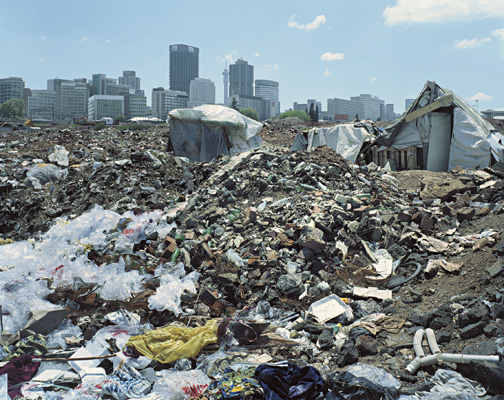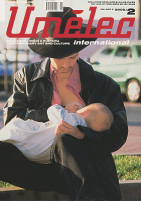| Umělec magazine 2002/2 >> From the other side | List of all editions. | ||||||||||||
|
|||||||||||||
From the other sideUmělec magazine 2002/201.02.2002 Karel Císař | exhibition | en cs |
|||||||||||||
|
No other large exhibition of visual art instigates so many conflicts as Documenta in Kassel, Germany. This was especially true of the 11th edition, this year curated by a non-European, Okwui Enwezor.
The unifying element of the show was the way the creators perceive artistic production as an original intellectual activity. Thus the exhibition was the last word in this year’s Documenta discussions on the state of the world. Critical reactions varied but were positive overall. According to the New York Times’s Michael Kimmelman, this year’s Documenta was even more political than the previous edition five years ago, curated by Catherine David. In fact, Frieze magazine correspondent Jörg Heiser expressed concern whether the broad varieties of political sentiment presented might not cancel each other out. But Peter Richter praised the overall balance of the show, writing in Frankfurter Allgemeine Zeitung that the exhibition effectively incorporated works by contemporary art stars within a broader body of artists from countries outside traditional art centers, most of whom had already left their homelands. Two aspects of Document 11 were particularly striking: the quantity of new works shown and the diverse composition of those works, frequently enhanced by juxtaposition of media. In the central Museum Fridericianum, paintings hung next to video installations. On Karawa presented her concept piece, involving two people locked in a cage and reading dates from the beginning of recorded time, next to a documentary work by Zarina Bhimji, Chantal Akerman, Fiona Tan and David Goldblatt. Other Documenta 11 venues devoted longer looks at individual media. The documenta-Halle presented predominantly video and ethnographic installations, while installations in the Kulturbahnhof emphasized the utopian architecture of Danish veteran Constant, Isa Genzken from Germany and Congolese star Bodys Isek Kingelez. The most impressive space of the exhibition, the newly reconstructed brewery, housed architecture by Carlos Garaicoa, Manfred Pernice, Mark Manders, and Simparch. In addition to such established artists as Allan Sekula, Annette Messager and Louis Bourgeois, this brewery also presented new works by Kutlug Ataman, Pierre Huyghe, William Kentridge, Igor and Svetlana Kopystianski, Steve McQueen, Shirin Neshat, Gabriel Orozko, and Yinka Shonibare, who along with Luc Tuymans, was one of the few painters represented at Documenta.
01.02.2002
Recommended articles
|
|||||||||||||










Comments
There are currently no comments.Add new comment